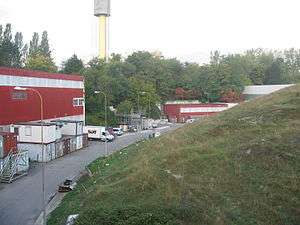Intersecting Storage Rings
The ISR (standing for "Intersecting Storage Rings") was a particle accelerator at CERN. It was the world's first hadron collider, and ran from 1971 to 1984, with a maximum center of mass energy of 62 GeV. From its initial startup, the collider itself had the capability to produce particles like the J/ψ and the upsilon, as well as observable jet structure; however, the particle detector experiments were not configured to observe events with large momentum transverse to the beamline, leaving these discoveries to be made at other experiments in the mid-1970s. Nevertheless, the construction of the ISR involved many advances in accelerator physics, including the first use of stochastic cooling, and it held the record for luminosity at a hadron collider until surpassed by the Tevatron in 2004.
 | |
| Intersecting Storage Rings | CERN, 1971–1984 |
|---|---|
| Proton-Antiproton Collider (SPS) | CERN, 1981–1991 |
| ISABELLE | BNL, cancelled in 1983 |
| Tevatron | Fermilab, 1987–2011 |
| Superconducting Super Collider | Cancelled in 1993 |
| Relativistic Heavy Ion Collider | BNL, 2000–present |
| Large Hadron Collider | CERN, 2009–present |
| Future Circular Collider | Proposed |

See also
External links
- ISR startup
- Early history of the ISR
- Picture of the ISR from above - It's the large earthen ring with circular roads inside and outside.